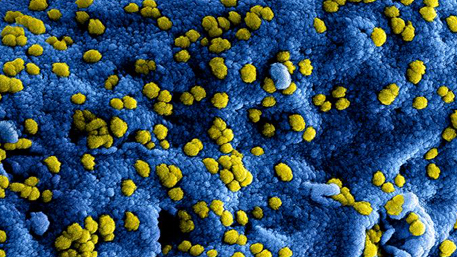
Long COVID: let patients help define long-lasting COVID symptoms
Nature editorial, October 7, 2020
Nature editorial, October 7, 2020
In deciding how to act on long COVID, we must take heed of what happened in the case of myalgic encephalomyelitis, also called chronic fatigue syndrome (ME/CFS). The condition shares some of the symptoms of long COVID, and people with ME/CFS struggled for years to be recognized as having a serious medical condition that needed specialized treatment and research.
Analysis of Genomic Characteristics and Transmission Routes of Patients With Confirmed SARS-CoV-2 in Southern California During the Early Stage of the US COVID-19 Pandemic
W Zang et al, JAMA Network Open, October 7, 2020
W Zang et al, JAMA Network Open, October 7, 2020
This case series of 192 patients found that 82% of SARS-CoV-2 isolates from Los Angeles shared closest similarity to those originating in Europe vs those from Asia (15%). Using the variation signature of the viral genomes, 2 main clusters were identified, with the top variants sharing genomic features from European SARS-CoV-2 isolates, and several subclusters of SARS-CoV-2 outbreaks represented trackable community spread in Los Angeles.
Integration of clinical characteristics, lab tests and a deep learning CT scan analysis to predict severity of hospitalized COVID-19 patients.
N Lassau et al, MEDRXIV, October 6, 2020
N Lassau et al, MEDRXIV, October 6, 2020
Deep Immune Profiling of MIS-C demonstrates marked but transient immune activation compared to adult and pediatric COVID-19
L Vella et al, MEDRXIV, October 6, 2020
L Vella et al, MEDRXIV, October 6, 2020
Using viral load and epidemic dynamics to optimize pooled testing in resource constrained settings
B Cleary et al, MEDRXIV October 6, 2020
B Cleary et al, MEDRXIV October 6, 2020
Developing multiplex ddPCR assays for SARS-CoV-2 detection based on probe mix and amplitude based multiplexing
R Nyaruaba et al, MEDRXIV, October 7, 2020
R Nyaruaba et al, MEDRXIV, October 7, 2020
SARS-CoV-2 RNA detection using pooling of self-collected samples: Simple protocols may foster asymptomatic surveillance
G Ibette et al, MEDRXIV, October 7, 2020
G Ibette et al, MEDRXIV, October 7, 2020
Insight on Sex-Based Immunity Differences, With COVID-19 Implications.
Hampton Tracy et al. JAMA 2020 Oct (13) 1274
Hampton Tracy et al. JAMA 2020 Oct (13) 1274
Women and men have striking differences in their autoimmune disease risk, their predisposition to and prognosis with various cancers, and their ability to respond to some infections—including the novel coronavirus. New research offers a potential explanation for these distinctions: sex-based differences in neutrophils, humans’ most common circulating immune cells.
Translational Research in the Time of COVID-19-Dissolving Boundaries.
Edgeworth Jonathan D et al. PLoS pathogens 2020 09 (9) e1008898
Edgeworth Jonathan D et al. PLoS pathogens 2020 09 (9) e1008898
A new multidisciplinary translational research partnership emerged in response to the SARS-CoV-2 pandemic, where university and diagnostic laboratories combined with clinical academic, research and healthcare science, and service delivery teams to create a single delivery unit. It highlighted important but renewed questions about the optimal model for diagnostic innovation; laboratory configuration; and professional working linking service, research, and public health






















.png)











No hay comentarios:
Publicar un comentario